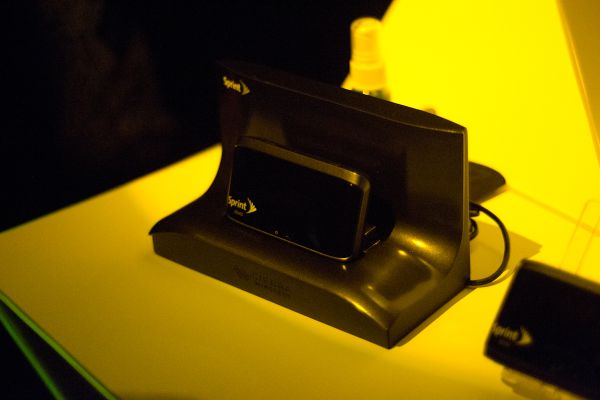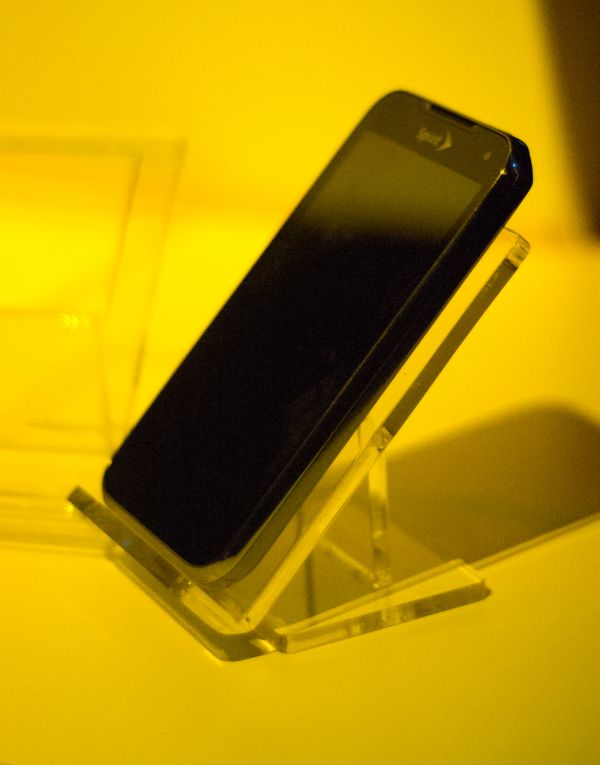Hands-on with the Sprint Galaxy Nexus LTE
by Jason Inofuentes on January 11, 2012 3:50 AM ESTSprint had a reception this evening that gave us a chance to get a closer look at their first LTE devices: the Sierra Wireless Tri-Network Hotspot, LG Viper 4G and Galaxy Nexus LTE. Though Sprint had all three devices at the event, they did not have a functioning LTE network to show off. They announced their first four networks last week (Dallas, Houston, San Antonio and Atlanta) and still expect to deploy in these markets during the first half of 2012. In addition, Sprint is committed to covering 120+ million people with their particular PCS 1900 MHz brand of 4G LTE goodness by the end of this year. And kicking this intiative off with a phone as great as the Galaxy Nexus is certainly a good start.
Operation of the handset was left to Sprint's representatives, though they were happy to load up websites and demonstrate UI operation to our heart's content. And, the results were as good as expected. Software is obviously stable and satisfying, the hardware they had on hand matches Verizon Wireless' variant in shape and internals, though Sprint would neither confirm nor deny that the two variants would be identical in terms of components and size. What they would confirm is that they would have several NFC-enabled devices available by the end of the year, and that all of their NFC handsets would support Google Wallet.
The LG Viper 4G will slot-in below the Galaxy Nexus as a mid-range LTE device, and will be priced accordingly. It features a 4" WVGA LCD display in a comfortable form factor, and runs Android 2.3 (Gingerbread), though Ice Cream Sandwich should follow in the second half of 2012. The SoC was confirmed as a Qualcomm-sourced 1.2 GHz dual-core solution, most likely APQ8060 paired with MDM9600 for connectivity. Sprint markets the device as being an ecofriendly solution, though that seems to be limited to a power sipping charger and casing made from 35% post-consumer recycled materials.

Sierra Wireless Tri-Network Hotspot in Optional Dock
Lastly, the Sierra Wireless Tri-Network Hotspot takes the cake for unlimited connectivity options. The device looked much thicker than competing LTE and 3G products like Novatel's MiFi. Making room for as many as three cellular radios is no easy feat, and hopefully some room remained for a beefy battery to power those radios. Details for that device remain particularly scant, though we'll be sure to report in as we learn more.
Sprint also had several older handsets available, including their full line of WiMax devices, and the first device with a PCS based Direct Connect solution, the Motorola Admiral. In speaking with Sprint's reps, it's clear that unlike six or seven years ago, the Direct Connect feature is not terribly consumer facing, and is really best targeted at enterprise and industrial deployment. To that end, it's likely that most of the handsets we'll see with the feature will be enterprise oriented with an emphasis on ruggedness and reliability.
Sprint's position among the Big Three wireless carriers is not likely to change in the near term. Their growing relationships with spectrum solutions partners like Lightsquared and ClearWire demonstrate a commitment to developing as strong an LTE network as they are in a position to provide. And their commitment to customers is no less strong, they will be supporting the WiMax network they are transitioning away from until at least 2014; which means that today's WiMax device buyers will be at the end of their contracts around the time Sprint expects to complete its nationwide LTE network.


















6 Comments
View All Comments
mcnabney - Wednesday, January 11, 2012 - link
No ICS for Viper until 2H2012? Seriously, it is going to be a year behind? Pass.dagamer34 - Wednesday, January 11, 2012 - link
What's even worse is using the MDM9600 when the MDM9615 will have been available, making battery life totally suck on the viper.djc208 - Wednesday, January 11, 2012 - link
I've been a Sprint customer for a lot of years, and generally happy, but I've got about 8 months before my contract is up and I'm not sure I'm going to stay with Sprint this time. Their network is a mess, and given my data use I'm not sure their "everything" plans are actually cheaper than I can get elsewhere. Verizon and AT&T are actually running 4G in my area, still no idea when Sprint will get here.I've got time for things to shake out but I may just become a Verizon customer unless Sprint gives me some reason not too.
slaughter111 - Thursday, January 12, 2012 - link
I'm with you. I got the EVO 4G as soon as it came out and was under the impression that we would have 4G towers here in Oklahoma City within a couple months of my EVO purchase. Well, here it is almost 2 years later and no sign of 4G. I have about 3 months left on my contract, and i'm almost certain i won't sign another Sprint contract. Verizon now has 4G towers in our area, and i'm wondering how they beat Sprint to the punch? I've been eye-balling Verizon as well, and Sprint will have to really make me a sweet deal (not likely) to sign another contract.MilwaukeeMike - Sunday, January 15, 2012 - link
Same for me here in Milwaukee. I have to wait a little longer than you to re-sign, but I have little hope for Sprint. When travelling through Chicago I can get a 4G signal, but it doesn't stay connected (on my phone, or my wife's Evo Shift) for more than a minute or two before dropping back to 3G. And the speed test is less than half what my Verizon 4G friends get in milwaukee.My only hope is that they leapfrog some cities and install LTE in cities without 4G before going back to do cities with it already.
mbzastava - Tuesday, January 17, 2012 - link
sprint/nextel/clearwire bought almost all available spectrum for the new Wimaxx standard. their 4g investements will mostly be for Wimaxx , and as you know there are no smartphones out there with Wimaxx recievers... atleast none that I know of.even if there were phones with Wimaxx recievers, it would still be more profitable for them to license out the spectrum to other carriers and let them do all the legwork, as opposed to installing towers and offering the service themselves. this is why they purchased as much as they did.